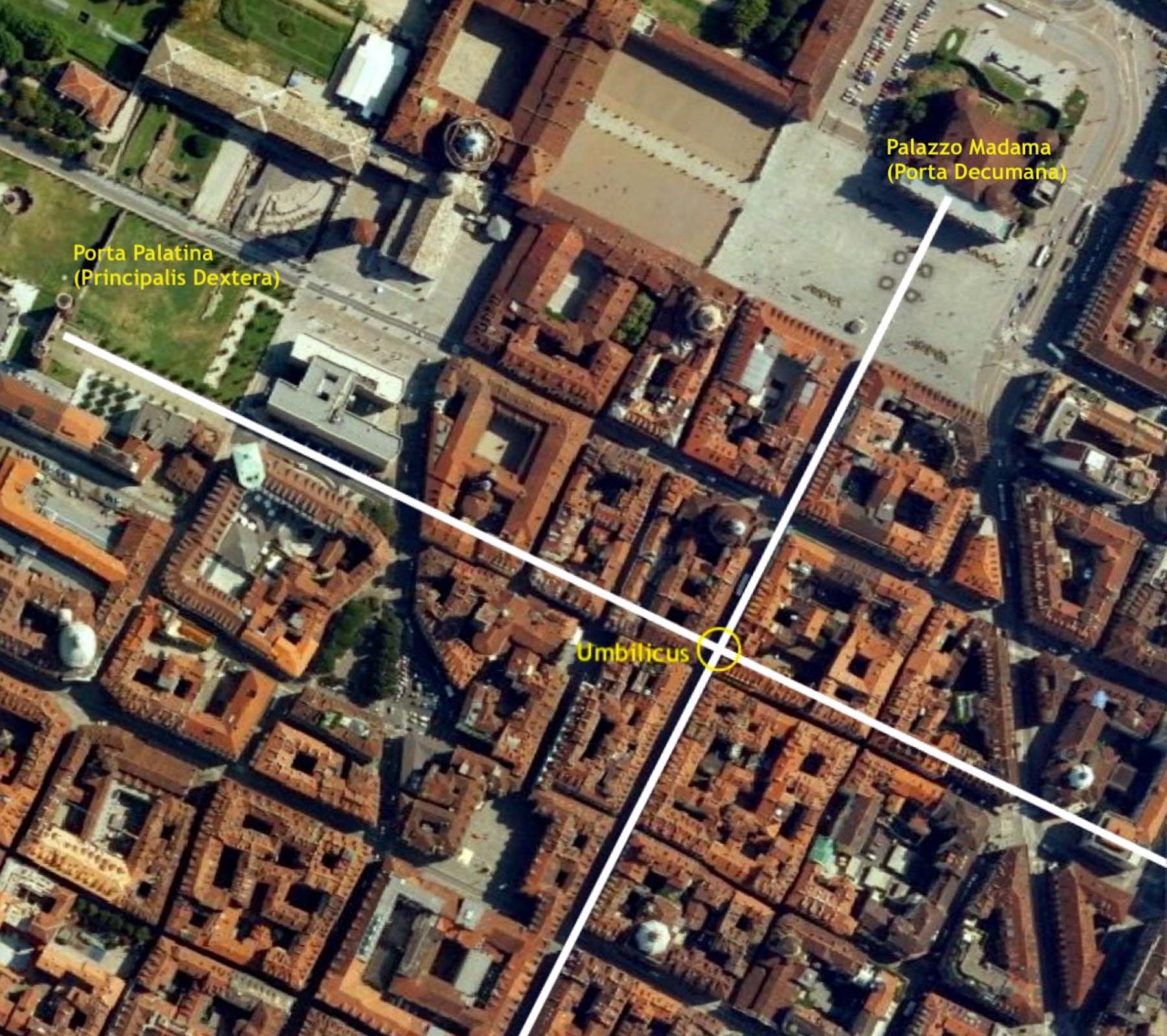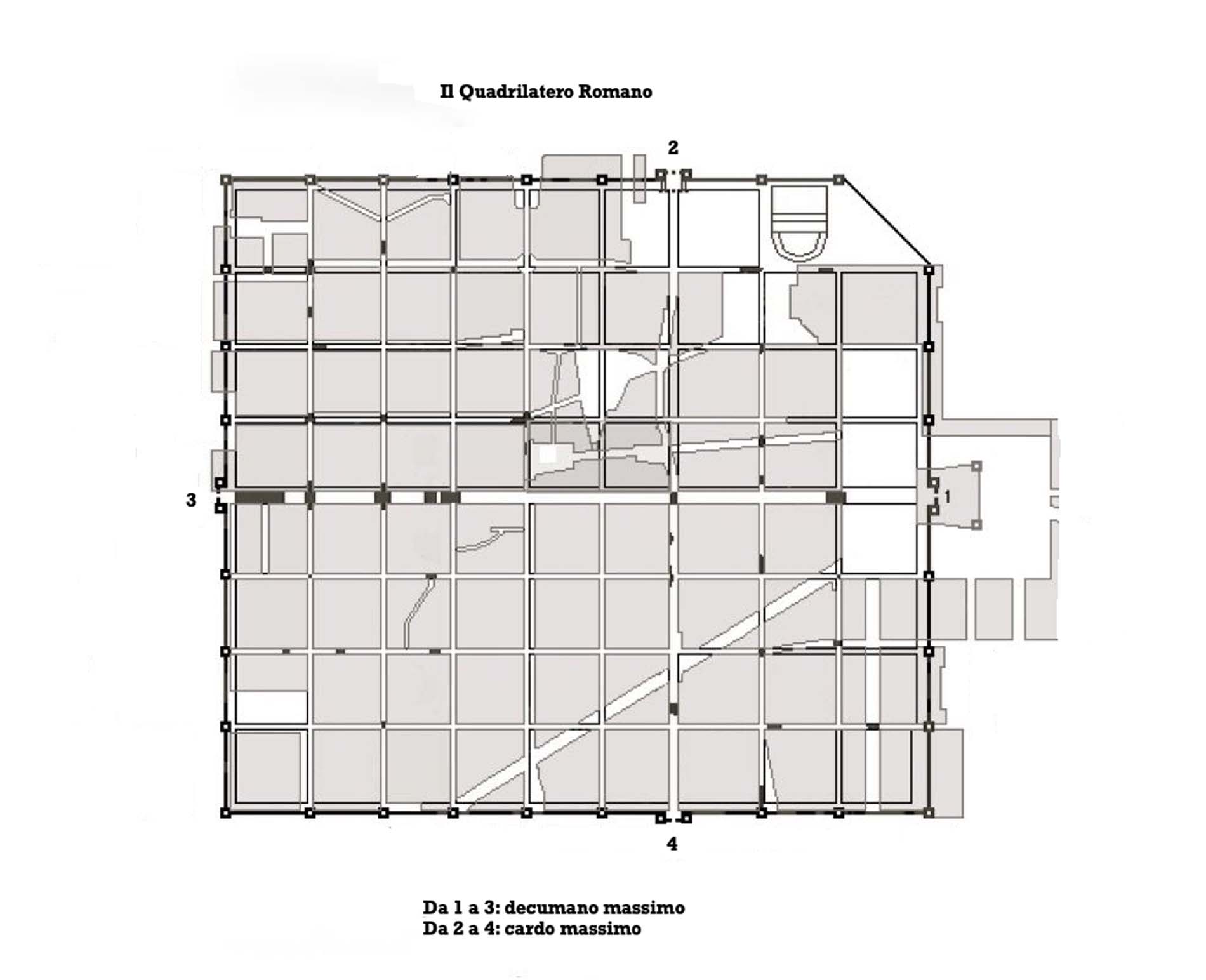Does your city have a certain birth date? Probably not, since there are few documented dates, especially in the case of cities founded in a distant past, which is also quite common in Italy.
Turin is no exception, but recently some interesting studies have been published trying to answer this question. This attempt is based on the assumption that Julia Augusta Taurinorum was founded following the ancient astronomical ritual, that the Romans had inherited from the Etruscan world.
Luckily, the city centre has preserved over the centuries the typical urban layout of the Roman castrum, so that we can still identify its umbilicus, located at the crossroads between the cardo and the decumanus maximus and representing the starting point for the measurements of the gromatici (the technicians responsible for defining the direction of the decumanus by observing the sunrise at the local horizon on the day of foundation).
By reconstructing their work, modern archaeo-astronomy is now able to put forward credible hypotheses at least on the day of birth of the city, while it is much more difficult, if not impossible, to identify the exact year only on the basis of astronomical calculations (the differences between year and year are really minimal).

Following the whole procedure step by step, when scholars start talking about solar declination, hour angle and sunrise amplitude, is not that easy and therefore we better just say that, according to experts, at the latitude of Turin the inclination of the decumanus maximus corresponds to the direction from which the sun rises in the days next to November 10th or January 30th.
At this point we can try to understand which one of the two dates is the most probable, checking if they could have a particular meaning at that time. The mundus Cereris with its purification rites occurred on November 8th, so the
following days could be propitious for a foundation, but the date of January 30th would coincide with the feast of the Ara Pacis Augustae, an anniversary instituted in honour of Augustus himself in 13 BC: a connection with this holiday would, therefore, seem more significant.

As for the year, the few available archaeological and literary testimonies can be used, to restrict the time frame during which the event could take place. The idea of a double deduction, first as Julia and then as Augusta Taurinorum, finds less credit today than in the past since there is no mention of Turin in the De Bello Gallico (although Caesar certainly passed through the Turin plain). Moreover, there are no other definite indications of a pre- Augustan foundation. It is much more logical to suppose a single deduction of the colony in the period from 27 BC to the Christian age (i.e. from when Octavian obtained the title of Augustus until the first explicit citations of the city). If we take the reference to the Ara Pacis feast for good, the foundation should have taken place after 13 BC and, at this point, the astronomical data would suggest 9 BC as the most likely year.
Of course, it cannot be excluded that Turin was born simply by following the terrain trend and, in this case, its orientation could have nothing to do with the day of foundation, but the archaeo-astronomical hypothesis is plausible and suggestive:
don’t you find that the idea of being able to celebrate the birthday of your city is a nice one?
In any case, it will not be bad to draw inspiration from the above to remember that Turin, in addition to being the capital of Savoy first and later also the capital of the Italian car production, retains traces of more ancient history, still visible today in the so-called Roman Quadrilateral and in the rooms of the Museum of Antiquity.
However, this is already a different story and it would be better to tackle these issues “on the ground” with a guided tour of the historic centre.
For further information:
A. C. Sparavigna, The astronomical orientation of Turin, 2012
S. Caranzano and M. Crosta, The foundation date of Augusta Taurinorum ex sole, 2018


